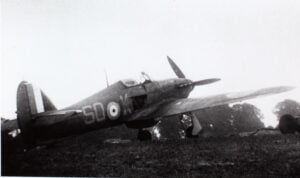Why the P-39 Airacobra Was So Hated

YouTube / Military Aviation History
The Bell P-39 Airacobra remains one of the most debated American fighters of World War II. Loved by some, despised by others, it earned a reputation that was as unusual as its design. Western Allied pilots often rejected it outright, while Soviet aces used it with deadly success. The reality behind this aircraft is a story of bold engineering choices, misunderstood capability, and the very different demands of different battlefronts.
A Radical Design That Made Pilots Nervous
From the moment pilots first climbed into it, the P-39 felt strange. Bell mounted the V-12 engine behind the cockpit and connected it to the propeller through a long driveshaft running beneath the pilot. This unusual configuration allowed for a powerful cannon to be mounted in the nose, but it also created discomfort among pilots who were used to traditional layouts.
Many felt uneasy sitting in front of a spinning shaft, and the idea of having the engine directly behind their seat did little to inspire confidence during the stresses of combat or the possibility of a crash landing.
The Missing Turbo-Supercharger
The greatest flaw in the Airacobra came from the decision to remove the turbo-supercharger before production. Without it, the aircraft lost critical engine performance at altitude. In an era when high-altitude dogfighting and bomber interception dominated the skies of Western Europe, this was a crippling limitation. While other American fighters surged upward to engage enemies at 20,000 or 30,000 feet, the P-39 became increasingly sluggish and ineffective as it climbed higher. This one design choice did more than anything else to shape the Airacobra’s poor reputation in Western service.
The mid-engine configuration also created issues with the aircraft’s handling. As fuel burned off or ammunition in the nose cannon was expended, the P-39’s center of gravity shifted noticeably. Some pilots reported difficulty recovering from spins, and others described the aircraft entering flat, unrecoverable spins during combat maneuvers. These traits made pilots wary of pushing the aircraft to its limits, and in wartime, an aircraft that cannot be flown aggressively is an aircraft that loses trust quickly.
Heavy Firepower With Serious Limitations
The Airacobra’s centerpiece was its huge 37 mm cannon firing through the propeller hub. On paper, it promised unmatched firepower, and when it connected, it could destroy nearly anything in the air or on the ground. Yet it suffered from several practical problems.
Ammunition was severely limited, and pilots often found the cannon prone to jamming, especially during violent, high-g maneuvers. Its slow shell velocity made accurate shooting difficult in fast-paced fights. Western pilots needed a nimble, fast-climbing dogfighter; instead, the P-39 felt more like a low-altitude gun platform that had been misplaced.
A Short-Range Fighter in the Wrong War
The P-39 also struggled with short range and a poor climb rate, making it a poor fit for the long-range escort missions and high-altitude interceptions required in Western Allied operations. The RAF knew this immediately and withdrew the aircraft early from front-line service, concluding that it could not compete with German fighters at altitude. American pilots in the Pacific and Mediterranean also found the aircraft underwhelming for the same reasons. The Airacobra simply didn’t match the missions it was assigned, which deepened the frustration surrounding it.
Yet on the Eastern Front, the P-39 became a star. Almost all Soviet air combat took place at low altitude, which played directly into the strengths of the Airacobra. Soviet pilots valued its stability close to the ground, its toughness, and its powerful cannon, which proved devastating against enemy aircraft and armored vehicles. Many of the highest-scoring Soviet aces flew the P-39, and they praised its reliability, maneuverability, and hitting power. In their view, it was one of the best fighters supplied through Lend-Lease, and it served them well until the end of the war.
Conclusion: Hated by Some, Loved by Others
The P-39 Airacobra earned its hated reputation not because it was inherently a poor fighter, but because it was sent into the wrong kind of war. Western pilots needed a high-altitude interceptor. The P-39 was designed for low-altitude fighting. Its unusual layout, spin characteristics, and lack of a turbo only magnified this mismatch. Meanwhile, Soviet pilots used the aircraft exactly where it excelled and came away impressed.
The Airacobra’s legacy is a reminder that even the most criticized aircraft can shine in the right environment and that reputation often depends on circumstance as much as design.




















